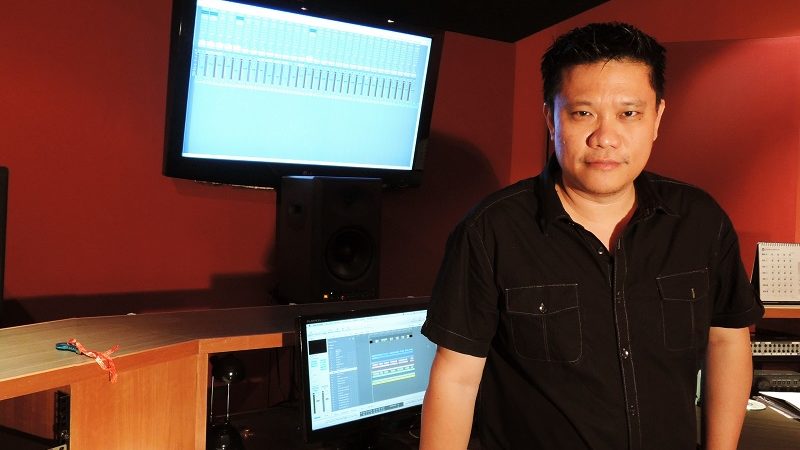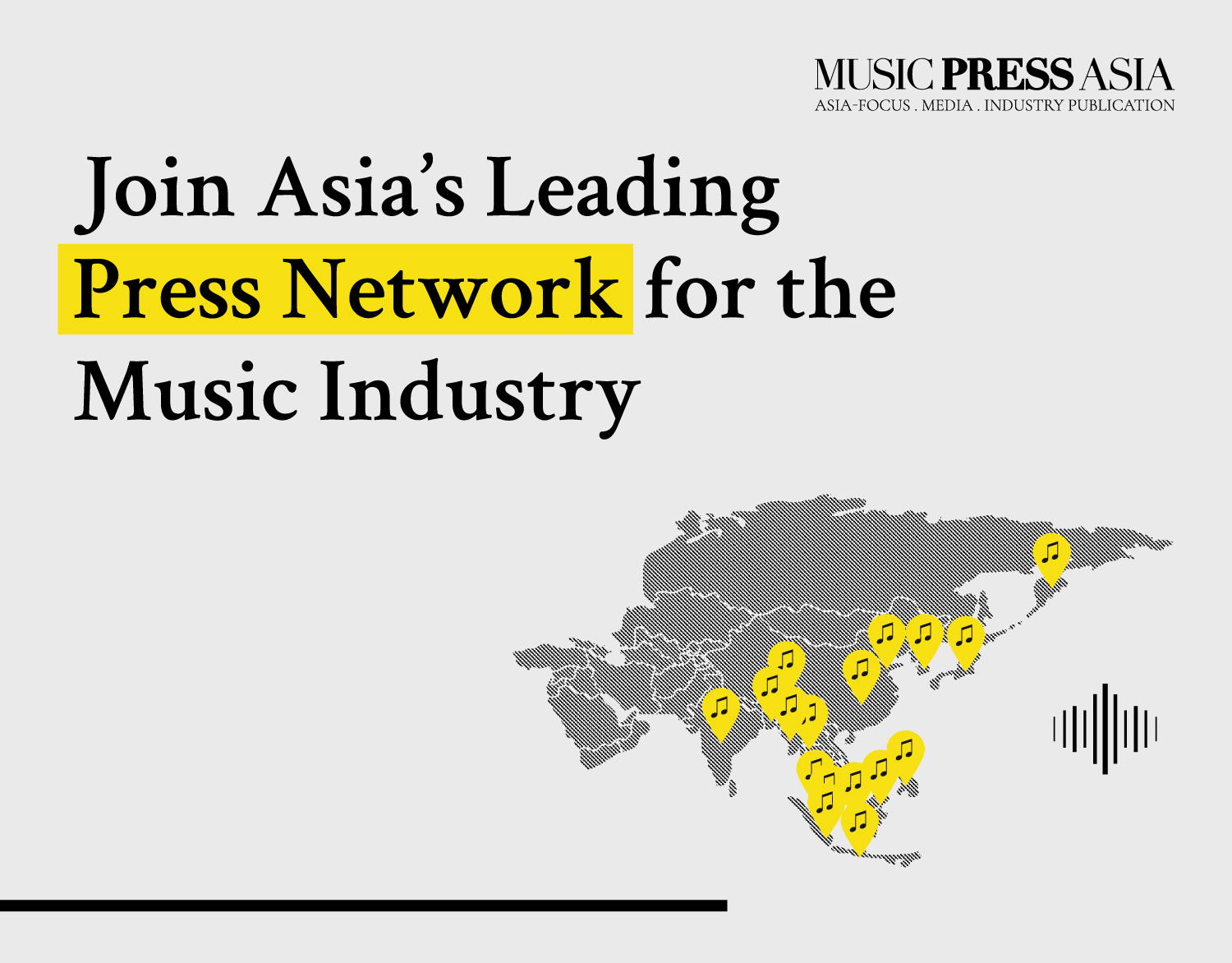Leon Tan: ‘When visuals fail to deliver, sound design help cross the finish line.’

Leon Tan, executive producer at Supernova. Music Press Asia.
Music Press Asia interviews Leon Tan, executive producer of Supernova, a Malaysia-based audio post studio that specializes in sound design/foley, ADR, dubbing, voice casting, M&E, audio engineering and final mix cinema, near field surround and stereo.
Over the last 20 years, Leon and Supernova’s portfolio has extended beyond the domestic’s dubbing & dialogue mixing project to internationall collaborations including commercials, animation series and feature films such as ‘The Garden of Evening Mists’, ‘Crazy Rich Asians’, ‘Fresh Off The Boat’, ‘Munafik’, ‘Polis Evo’, ‘Pulang’, just to name a few. Today, Leon and his team continues to provide some of the region’s top audio craftmanship to sectors including cinema, television, OTT/SVOD, games, mobile and new media.
The elements of storytelling and sound design come hand in hand when it comes to producing films, advertisements and any form of visuals. Why is this important?
I think it was George Lucas who said “sound is 50% of the visual experience”, and he should know! And so, the easiest way to understand the impact of sound on screen storytelling, is simply – turn off the sound. And when all sound is off (music, sound design, etc.), the storytelling becomes severely crippled, even if you still get to see all the gorgeous visuals.
Can you imagine feature films like “Star Wars”, “The Conjuring” and “Titanic without sound? Even in “A Quiet Place”, a film about people trying to move silently throughout the film, utilizes well-placed sound design to heighten the experience and therefore the storytelling.
“Sound design is the architecture that houses the aural experience while an audience watches a film,” — Leon Tan, Executive Producer of Supernova.
Sound design help filmmakers tell their screen story, which I would describe as ‘landscaping a film with sound’. It is a misconception of many people who think sound are merely fillers for the visual. In fact, sound design help conceptualize the same way an architect or landscaper would approach a project; by incorporating subconscious elements like rustling of clothes, jangling of keys, opening/closing of doors, the squeak of a parking brake, footsteps on different grounds, to the bigger moneyshots like explosions, gunshots, car crashes, swordfights, space battles and so on.
The audience rarely realise that a lot of sound you hear in a movie was done in post-production, a phase in the film-making process that sometimes happen long after the scene is shot on location. This is done so that every milisecond of sound can be treated and manipulated according to the needs of the storytelling. And we are talking about complete control.
And in some ways, sound design often saves the visual. Take horror and action films for example because what is shown on screen may not always have the exact impact until the sound are added in the film.
You are based in Malaysia but opportunities have come from international partnerships. Tell us some of your most memorable moments.
“Saladin: Animated Series” was my first international experience in the audio-for-visual profession. A Qatar-Malaysia co-production, this animated series require an audio treatment that was cinematic (despite being a TV series), and also, meet international creative and technical standards.
“It was an adventure to craft a soundscape for the 12th century Middle East, complete with sword fights, horses, gladiatorial arenas, street markets, deserts, palaces, bandit camps, Crusader armies, and even, ship battles.”
The Qatar producers invited us to the city of Beirut and Damascus to study and absorb the culture and musicology of the region, so that we could transfer some of the rich vibe into the series. It was an eye-opening experience just being able to work with the Lebanese, Syrian, Tunisian, Egyptian and Saudi creatives. Their international outlook and passion in detailing the region’s stories played a key part in the evolution of my creative journey as a producer.
In another Malaysia-produced stereoscopic 3D animated feature film, “War of the Worlds: Goliath” expanded into an international production merging partnerships from the U.S. and Korea. With its very own set of challenges, creatively and technically, the story surrounding the film envisioned an “alternate history” where Martians invaded Earth in 1915, on the eve of the day World War I began.
And so, from the audio’s perspective, a lot of research was done to recreate the authentic sounds of that era; from the rumbling machineries of biplanes, triplanes, airships, to C96 “broomhandle” Mauser pistols. Substantial amount of imagination also went into creating the language spoken by Martians, their spaceships, battle tripods and even heat rays.
The best part happened right at the end when the film was screened before an audience at the 3D facility owned by James Cameron in Los Angeles. Needless to say, it wasn’t just any audience, it was JC’s production team. Their biggest response was “Man, who did the audio? It’s fantastic!”
In audio, what are the elements that play critical roles in telling a great story?
Roughly, there are four audio elements that we use to complete the audio experience:
1)Dialogue from actors and the ambient on-screen;
2)Music score (either digitally composed or a full orchestra depending on the overall experience the filmmaker wishes to express);
3)Sound design – the landscaping of sound;
4)The Mix – the coming together of all 3 elements above, merged into a single audio experience.
Obviously, the film industry has gone through many facades and changes over the years. How has the Malaysia government participated and support the film industry?
It’s hard to believe that film industry people still think the Government does not help them. I believe that Malaysia’s creative industry, as a whole, is probably the most Government-supported industry in our economy. Since the early 2000s, the government — via agencies such as FINAS, MDeC, MCMC, MyCreative Ventures, MAVCAP, MDV, even Khazanah Nasional — began to invest in infrastructure to develop and commercialize the creative industry, which continue to come today in the form of grants, rebates and marketing support.
Granted, there were stories of great successes as well as failures, and so, it would be quite unfair to blame any party and its negligence towards the industry. With that said, we still need better initiatives in terms of better funding and support programms, especially when it comes to building bridges with other media industry overseas.
The film industry has proved to contribute, at a massive scale, to the growing economy in the USA, UK, Ireland, Canada, Mexico, China, Japan, South Korea, Australia, and even places like Iceland and Morocco. Knowing that we do not need to reinvent the wheel, we can learn from these industries, which, by the way, also received support from their own governments.
Private sectors should also be encouraged to increase its participation while help reduce Government’s burden. Domestic and international participation has already been made by companies such as ACE Pictures, Salon Films and 108 Media.
What about the region surrounding Malaysia?
In the area of sound for visuals, more known as “post-production”, Malaysia is in a very competitive arena. Thailand has always been seen as the place to conduct post-productions in Southeast Asia, and increasingly in Vietnam.
The advanced media industries in Hongkong, Taiwan, India, Australia and increasingly China, has also increased the competitiveness in the region.
That said, Malaysia still has its “edge” – a professional community adept in English and Chinese — coupled with a strong foundation in technical post-production since the early 1990s: the prominent status as a TV commercial production hub during the “Made In Malaysia” policy era gave rise to a world-class award-winning post-production studios. And increasingly, involved in international projects such as “Crazy Rich Asians” and “Star Trek: Discovery”.
The future of audio/sound services for visuals in Malaysia?
Compared to when I first started out in the early 2000s, the opportunities for building careers in the film industry have certainly expanded. Local box offices have boomed: the interest for local productions alongside Hollywood films is beginning to see increased in ticket sales. Additionally, we are also beginning to see a surge in the demand for original films from streaming platforms like Netflix, HBO Asia and VIU. So, needless to say, there’s definitely a better chance of having a career for the profession of your choice in this industry today, then say, 10 years ago.
Any advice for budding sound professionals plotting a career path in post audio production?
Advice for budding sound professionals: Specialize, specialize, specialize. Focus on that particular passion within the sound arena – it could be recording, or sound design, or foley, or mixing, etc. Be very, very good at a few of these, but don’t generalize. Focus. Be the subject matter expert in that field of sound, yet, never stop learning. You’re always a student. And while you’re doing that, take a step back and understand your place in the storytelling process. Don’t miss the forest for the trees. Get a sound (pun intended) understanding of telling stories for screen, then you can truly offer your craft to the filmmaker, and be a part of the story.
For more information about Leon Tan and his latest project, please click here, or email via us@supernova-media.net.




